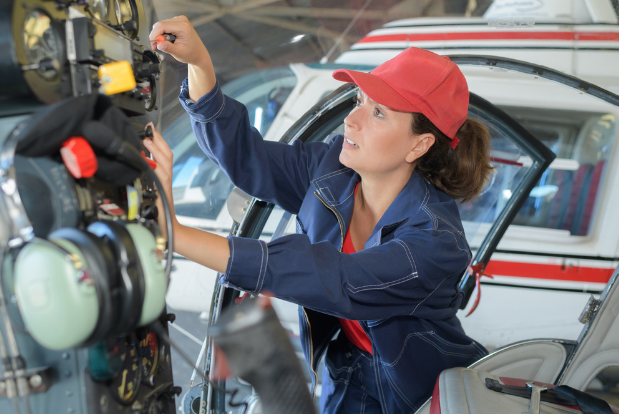
Rubber is an essential part of commercial planes and spacecraft. It protects passengers, electronics and other components from a variety of stresses and dangers. Rubber is an elastomer, a flexible polymer that can withstand a variety of extreme conditions. Here are some of the most common uses for rubber in aerospace.
1. Temperature Regulation
Temperatures decrease at high altitudes, and without rubber seals, taking a plane ride would be extremely uncomfortable. These seals are even more important in space, where temperatures can reach negative 459.67 Fahrenheit, also called absolute zero. During reentry into the atmosphere, friction caused by air moving along the outside of a spacecraft makes temperatures extremely high. Without the right rubber technologies, astronauts wouldn't survive. O-rings for other aircraft also need to withstand temperature extremes. Some are designed for sustained high temperatures, and others can withstand short bursts of heat. Some rubber devices are resistant to low temperatures as well.
2. Pressure Regulation
Airlocks and seals can keep air from escaping from aircraft and spacecraft. Without them, low air pressure on planes would prevent people from getting the oxygen they need. In space, a sudden change in pressure could cause a person's lungs to burst. It could also lead to an embolism, a blocked blood vessel caused by gasses in the bloodstream.
The rubber o-rings that connect the sections of the rocket boosters for NASA's space shuttle need to withstand extreme temperatures and explosive pressure. A problem with these essential components led to the Challenger space shuttle crash in 1986; a leak in an o-ring allowed super-heated gas to escape, leading to an explosion during launch.
3. Protection From Vibrations
Flexible rubber keeps vibrations from harming equipment during takeoff, landing and high-speed flight. It also keeps pilots and passengers more comfortable, allowing them to fly without distractions.
4. Resistance to Harmful Chemicals and Solvents
Rubber is resistant to most harmful chemicals, including aircraft fuels. Nitrile, a type of synthetic rubber, is often used in fuel hoses and gaskets. People even use flexible, liquid-resistant nitrile gloves to protect themselves from corrosive chemicals and biohazardous materials. Different types of rubber are resistant to different compounds, so you should consult with experts for help selecting the best kinds of rubber materials for your aircraft's needs.
5. Friction Resistance
Traveling at high speeds creates atmospheric friction, which can harm many types of materials, and lead to high temperatures or even engine failure. Friction in intermittently moving parts is called breakout friction, and it can lead to pressure that tears parts of rubber seals. Running friction is caused by continuously moving parts, which can cause o-rings to swell and eventually fail. It can also increase wear on metal parts and other materials.
Choosing the correct material can reduce friction. You can also protect rubber parts by adding lubrication, graphite or Teflon. Increasing the groove width on seals will allow them to expand more, raising resistance to friction and heat.
Without the advanced types of rubber available today, people wouldn't be able to travel safely on commercial, military or space flights. These essential components have helped people fly faster than the speed of sound, go to the moon, and avoid long ocean voyages. One day, they could even help astronauts walk on Mars.
© 2025 ScienceTimes.com All rights reserved. Do not reproduce without permission. The window to the world of Science Times.












